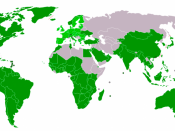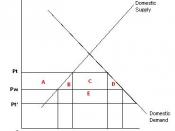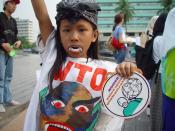Introduction
'â¦self-sufficient because without imports they must consume only the combination.' (Irvin, 2011, p. 485) The trade of goods or services along international mainland. This breed of trade allows for a preferable competition and more competitive pricing in the firm. The competition results in more affordable products for the consumer.
Forms of restriction
International trade the forms of restriction is Quota, Tariff, Subsidies, Embargo and Import licence. Firstly, Quota government-imposed limit on the quantity or in exceptional cases the value, of the services or goods that may be imported over the provisions period of time or exported. Quota is more effective in restricting trade then tariff, if domestic demand for a commodity is not sensitive to increases the price, because affect the quota may be more disturbing to the international trade mechanism than tariff or quota cannot be offset by depreciation of the foreign currency or by an export subsidy.
Selectively enable to other countries, quota can also be a coercive economic weapon. In addition, Tariff is a tax on imported goods. In the domestic market, will increases the cost of imports, making domestic production relatively less costly than it would be without the tariff. This will increase domestic production in a protected industry and decrease imports. The existence of imports in an industry is an indication that at the current level of domestic demand, foreign production is more efficient than domestic production. With the tariff restricting imports, receive a smaller level of output and the domestic consumer will need to pay a higher price. The domestic production enterprises in the industry will be protected tariffs because it will increase the output and prices. Subsidies is a payment by the government to a producer. Export subsidy is a payment by the government to the producer of an exported good.


